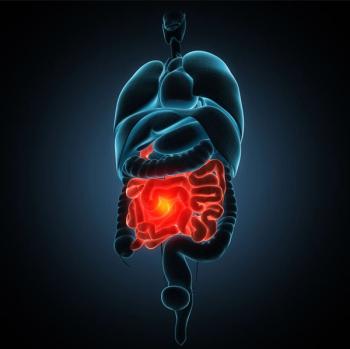
Subcutaneous TNF Inhibitor Offers New Option in Ulcerative Colitis
The subcutaneous tumor necrosis factor (TNF) inhibitor golimumab shows robust clinical responses, mucosal healing, and improved quality of life for ulcerative colitis patients who respond poorly to conventional treatments.
The subcutaneous tumor necrosis factor (TNF) inhibitor golimumab shows robust clinical responses, mucosal healing, and improved quality of life in anti-TNF–naive patients who have moderately to severely active ulcerative colitis (UC) despite receiving adequate current treatment, such as azathioprine or corticosteroids.
Biologic therapy has found a niche in the management of autoimmune diseases, including inflammatory bowel disease (IBD). The anti-TNF agent infliximab is approved for the treatment of Crohn disease (as well as rheumatoid arthritis), and adalimumab, approved for Crohn and rheumatic diseases, is currently under FDA review for an ulcerative colitis indication. Patients may prefer the subcutaneous drug because it is more convenient, and biologics in general are safer than the alternatives, says an expert on IBD. But insurers may balk at the cost.
In a
At week 6 of treatment, clinical responses were seen in 51.8% of patients receiving induction therapy of 200 mg of subcutaneous golimumab at baseline followed by 100 mg 2 weeks later, and in 55% of those receiving 400 mg, then 200 mg, reported Sandborn. Both active-treatment groups had significantly better clinical response rates than participants receiving placebo (29.7%).
Biologic therapies are superior to placebo in inducing remission of active Crohn disease and ulcerative colitis, and in preventing relapse of quiescent Crohn disease, according to a 2011
“Biologics are the most effective, safest drugs introduced for the treatment of IBD,” says Steven Hanauer, MD, Chief of Gastroenterology at the University of Chicago, who was also a co-author of the systematic review. “They are far safer than steroids and far more effective than immunosuppressives.”
However, researchers have not yet reached the optimum dose for either golimumab or adalimumab, says Hanauer, who believes the evidence of benefit with these two drugs is relatively small compared with infliximab.
“Clearly, golimumab is going to be a useful drug in UC,” Hanauer says. “If the efficacy is the same as infliximab, patients will prefer the convenience of a subcutaneous drug. But we can’t say the remission rate of golimumab in this DDW trial is comparable to results with infliximab. There are subtle differences in patient populations.”
Perhaps infliximab will be more useful for hospitalized patients with more severe disease and golimumab will be more useful in the outpatient setting, he speculates.
Another concern is drug costs. IBD patients require significantly higher doses of anti-TNF agents than do rheumatic disease patients. “Insurance companies are starting to balk at paying for double the dose in the IBD market compared with rheumatic diseases. About half of our IBD patients require dose intensification with infliximab, and we are getting push back from third-party payers. This is a huge issue among gastroenterologists,” says Hanauer.
Biosimilar drugs may arrive in 2014, but “from my experience with biosimilar companies, that only leads to a 20% price reduction,” he says.
Newsletter
Enhance your clinical practice with the Patient Care newsletter, offering the latest evidence-based guidelines, diagnostic insights, and treatment strategies for primary care physicians.

















































































































































































































































































